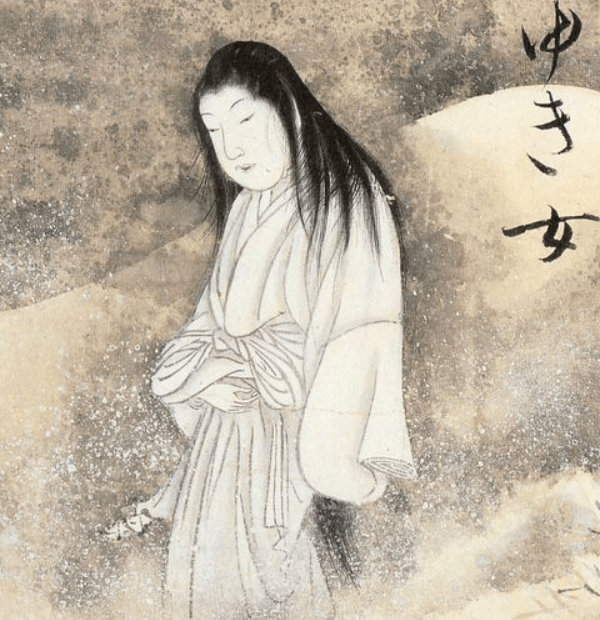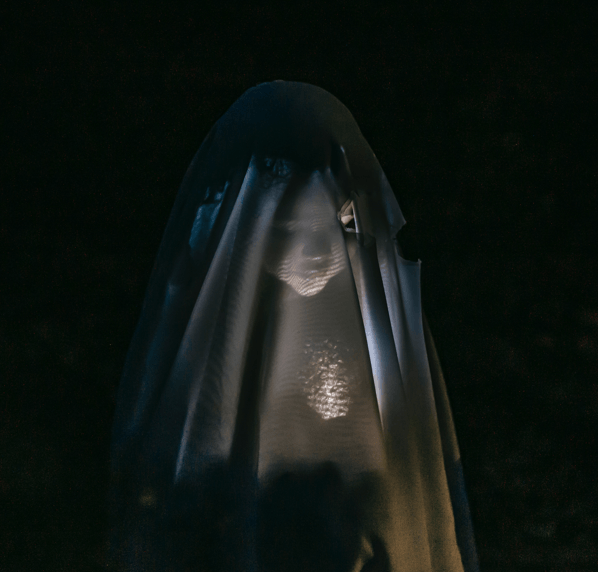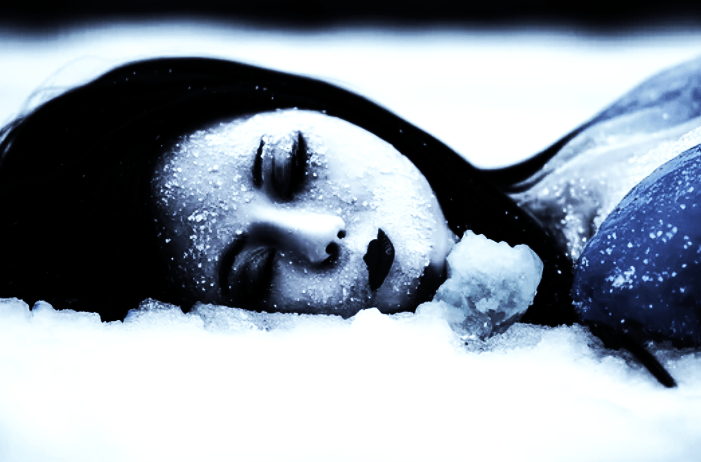We recently wrote about the “Slit-Mouthed Woman” in Japanese folklore, Kuchisake-onna, and today we’re discussing a similar spirit entity known as Yuki-onna. She is one of the most widely known yōkai throughout Japan and is a key feature in many folk tales across the country.
But who exactly is Yuki-onna? What did she look like? And where did she live? Read on to find out more.
Who is Yuki-Onna (雪女)?

In Japanese, Yuki-onna translates as “snow woman”. As to be expected, the snow and ice play an important role in the tales of Yuki-onna, and she is more prevalent in the mountainous regions of Japan, or in the colder months of the year.
In most accounts of the snow woman, she is portrayed as a malevolent entity seeking harm on those she comes across. The origin of yuki-onna differs depending on the prefecture, but she is generally believed to be borne out of tales of grief and sorrow, and she nearly always meets her end by melting or disintegrating into nothingness after coming into contact with unfavourable heat conditions.
What Does Yuki-Onna Look Like?
Yuki-onna has extremely pale, almost blue skin, signifying her cold nature. Some tales around even describe her skin as transparent, a feature which allows her to blend in to the icy environment when she appears on cold, wintry days.
Yuki-onna has a pretty face, framed by long, jet-black hair that provides a jarring contrast to the hue of her skin. Yuki-onna’s height is, again, disputed depending on the region. More often than, though, her height is described as taller than average for a female.
The snow woman typically wears white clothing, though many believe her to don red kimonos in order to mask the colour of blood from her victims.
How Old is Yuki-Onna?
Yuki-onna seems to vary in age depending on the story, but most accounts place the snow woman in her 20s. She is often described as a beautiful young woman, and she uses her enchanting nature to her advantage by luring people into traps.
Variations of the Yuki-onna suggest a different age. Yuki-onba, for example, means “snow granny”; while Yuki-onago translates as snow girl.
Other Names
Yuki-Onna goes by various names, and you may also have heard of her as one of the following:
- Yuki-Onba – “Snow Granny”.
- Yukinba – “Snow Hag”.
- Yukijorō – “Snow Woman”.
- Yuki-Onago – “Snow Girl”.
- Yuki-Musume – “Snow Daughter”.
- Yuki-Anesa – “Snow Sister”.
- Yukifuri-Baba – “Snowfall Hag”.
Yuki-onna and Minokichi

Perhaps the most famous retelling of Yuki-onna’s story comes from Koizumi Yakumo (also known as Patrick Lafcadio Hearn, a Greek-Irish-Japanese writer often cited as a major influence in establishing Japanese culture in the West.
In Yakumo’s version, Yuki-onna’s story begins with two woodcutters, Mosaku and his apprentice Minokichi, who lived in a small village in the snowy mountains. The two lumberjacks would cut trees everyday in the nearby forest, and return the lumber to the village when the day was done. One day, though, a powerful snowstorm left the pair stranded in the forest, and they took shelter in an old abandoned wood cabin to allow the storm to pass. The storm did not pass, though, and Minokichi and Mosaku stayed the night.
In the middle of the night, Minokichi awoke to the frightening image of a snowy white spirit woman hovering over his master. This woman was Yuki-onna. She released an ice cold breath onto Mosaku, and he froze to death in an instant. Yuki-onna then turned to Minokichi and informed him that she would spare him the same fate because he was young and handsome, but only if he didn’t speak of what happened to Mosaku.
Several years passed, and Minokichi kept the death of his master to himself, and continued working in the forest. One day, when returning from the woods, Minokichi encountered a beautiful young lady called Oyuki, and they both felt an immediate spark. Over the coming weeks, they grew very close and started a romantic relationship. Oyuki moves into Minokichi’s family home with him and his mother, and they build a big family together. They bring 10 children into the world.
One night, Oyuki is sewing in the dark, with only the flickering of the torch light shimmering against her face. Minokichi studies her face, and begins to feel déjà vu. The light reveals her skin to be extremely pale – almost blue – and it contrasts greatly with her long, jet black hair. He’s seen this face before. He begins to tell her of the night in which his master, Mosaku, was killed, and tells Oyuki that she looks incredibly similar to the spirit that took his life. Oyuki slowly turns to Minokichi with an expressionless face, and says,
“Do you not remember what you promised?”
The weather quickly changed. A snowstorm grew from the calm. An aggressive chill was sent down the woodcutter’s spine, and he now truly remembered who Oyuki was – she was Yuki-onna. She told the woodcutter that she would kill him if not for the children they had together. Oyuki made Minokichi promise to look after their children, and then she melted into nothingness. Minokichi was left speechless, and spent the rest of his days dutifully caring for his children. He remained constantly vigilant and weary of the woods, for fear of encountering Yuki-onna once more.
Get in Touch
Have you heard of Yuki-onna before? Perhaps you know of another story involving the snow woman? If so, please let us know in the comment section below, we’d love to hear it!
For another haunting entity from Asian mythology, check out our article about the Gwisin in Korean folklore.
For great video overview of Yuki Onna, check out the cool YouTube video about the snow ghost by Linfamy below.
For any enquiries, contact me at richard@mythologyplanet.com
